Wildegg Castle
About Museum Aargau
Hauptmenü

Wildegg Castle Estate has undergone many changes and conversions over the course of the centuries as a result of sales and purchases. In around1770 it achieved its maximum extent of approximately 120 hectares of cropland, meadows, vineyard and commercial premises. From the 18th century onwards the Effinger family sold off parts of the property.
Along with the Castle Estate, the Effinger family also held governing rights over the villages of Möriken and Holderbank - including taxation and lower-level legal jurisdiction. The family passed judgement on smaller-scale offences, appointed the priest and was allowed to open commercial enterprises such as inns and mills. Apart from the fishing rights, these governing rights were lost when the French invaded in 1798.
After 1912, the Swiss Confederation was able to buy back some of the properties sold by the Effinger family such as Gasthof Bären in Wildegg. Today the estate has a surface area of some 100 hectares and comprises 37 buildings, a vegetable and pleasure garden, an organic farm, grapevines, forestry and fishing rights.
In 2011, Wildegg Castle Estate was converted into a foundation of the same name. The foundation is responsible for administering the entire estate. Museum Aargau runs the museum and takes care of the gardens. The aim is to give visitors the opportunity to experience all the facets of a Baroque castle estate in situ.
+41 (0)848 871 200
schlosswildegg@ag.ch
Wildegg Castle was built in the first half of the 13th century by order of the Habsburgs.
Perched on a ledge with a striking main tower and residential annex, the castle was first mentioned in 1242. It was the seat of a branch of the Habsburg family that belonged to the lower gentry, the stewards of Habsburg and Wildegg. Before 1348 the castle was granted to the Lords of Hallwyl as a fief by the Habsburgs. Thüring I of Hallwyl had the complex elaborately modernised in 1372.
When Aargau was conquered in 1415, Wildegg Castle also fell to the Bernese.
The Hallwyls sold the castle in 1437. After various changes of owner it was purchased by the City of Bern. In 1483 it was then sold along with all its lands and rights to Kaspar Effinger, a member of the Aargau gentry.
Wildegg remained in the possession of the Effinger family for eleven generations until 1912.
The Effingers belonged to the lower nobility and appeared in the town of Brugg in the 14th century where several of them were mayors. When they purchased Wildegg, the Effingers also acquired Bernese citizenship rights and were among the ruling families of Bern from 1680.
The castle virtually burned to the ground in 1552 after being struck by lightning. It was then reconstructed in the Late Gothic style. In around 1700 Bernhard Effinger had the castle converted into a Baroque manor house, with extended gardens replacing the demolished fortification structures.
In the 17th century and again in the 19th century the Effingers also owned nearby Wildenstein Castle in Veltheim. However, the last owners in the 19th century preferred to reside in the more comfortable Erlachhaus and at the country house in Wildegg.
In 1912 the last in the family line, Julie von Effinger, bequeathed Wildegg and most of its furnishings and lands to the Swiss Confederation.
Zurich National Museum turned the castle into a residential museum which has been open to the public since 1917. The castle underwent extensive renovation in 1938 and then again from 2007.
Since January 1st 2011 the castle and its estate have belonged to the Wildegg Castle Estate Foundation established by the canton of Aargau.
Museum Aargau is responsible for running the museum.